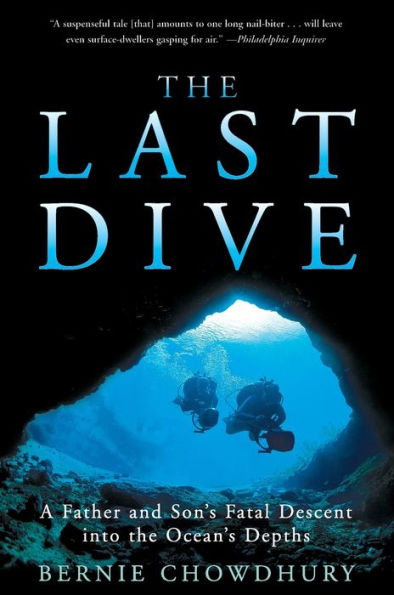Read an Excerpt
Chapter One
Deadly Secrets
October 12, 1992. North Atlantic Ocean,
approximately 60 miles offshore,
equidistant from the New Jersey and New York coastlines.
The wind mounted steadily throughout the night as Chris Rouse, cocooned in his sleeping bag, braced himself against the side of his bunk. He felt a bit uneasy, his stomach tossed by the dark waves that slammed against the 60-foot length of the dive charter boat Seeker. He was not that far from the New Jersey coast, but he might as well have been in the middle of the Atlantic Ocean. Chris peered out from between his sleeping bag and the bunk. In the dawn's soot-gray light, all he could see through the boat's windows was a blanket of sky and dark-blue waves with white spray blowing off their crests. Somewhere in the distance lay the horizon, but he couldn't tell where; the sea and sky were seamless. He judged the waves to be five feet high, with occasional rollers over eight feet. Not a good day to continue the exploration of the most technically challenging dive site he had faced in more than seven hundred logged dives.
Only yesterday, the thirty-nine-year-old Rouse and his twenty-two-year-old son, Chrissy, had conducted two dives to the unidentified submarine 230 feet below them. The wreck lay in three pieces, like a cigar with its middle torn out and angled between the ends. The middle section included the conning tower, the large tubular structure perpendicular to the vessel's body. The tower, though still intact, had been torn from its mount and thrown aside by whatever unknown force had sunk this submarine, probably back in the Second World War. Underneaththe conning tower was the control room, the submarine's brain. Nothing was left of this nerve center but a jumble of jagged, sharp-edged steel plates and debris, the result of some violent explosion. Yesterday, Chrissy Rouse had crawled under and between the steel plates, wriggling his way inside while his father hovered outside the wreck. Somewhere in those razor-edged ruins lay something that would identify this sub, and father and son were determined to find it. Maybe the captain's logbook-it had to be nestled amid the wreckage just inside the opening. Chrissy hadn't found it yesterday, but the Rouses knew they were close. All that stood in their way was time, effort, and eight-foot waves.
The Seeker bobbed and tugged at its anchor line, like a trapped animal seeking to break its tether. It had fought the ocean incessantly throughout the night, and its wooden beams and planking let out creaks of protest at the restraint. The passengers and off-duty crew had tried to sleep in their bunks while wedged in such a way as to prevent being thrown to the heaving deck. John Chatterton, a commercial diver, sport-diving instructor, highly respected wreck diver, and one of the Seeker's two captains (required by Coast Guard regulations during an overnight boat charter), burst into the main cabin and threw the light switch. "It's six o'clock," he announced. "If any of you want to do two dives today you need to hit the water early. Weather report's calling for steadily increasing seas, and you can see" -- he nodded toward the window -- "it's snotty already. If you wanna dive, get in the water fast. We'd like to pull the hook and get out of here soon, before we really get slammed. I'm gonna blow off my personal dive, and I'll just go down to pull the hook."
The blond Chatterton looked as if he'd fit in more readily on a college campus than on a dive boat, with his wire-rim glasses and boyish face. Unlike many hard-bitten sea captains, Chatterton had a receptive mind; he was happy to discuss diving techniques and gear configuration with his customers, even as he remained soft-spoken when talking about his own expertise and accomplishments. Chatterton never made others feel stupid or inadequate. His demeanor, combined with the depth of his experience, lent his advice more weight, and divers sought it out.
Chatterton was on intimate terms with the wreck that Chris and Chrissy Rouse aimed to conquer. The captain was credited with having been the first diver to identify the mysterious object as a submarine. On Labor Day, 1991, Chatterton had headed out on the Seeker with a group of divers to check out a potential wreck site that the boat's owner, Captain Bill Nagel, had heard about from a fisherman during one of Nagel's frequent drinking bouts. The captain's alcohol-sodden memory had been accurate. On a follow-up dive, Chatterton had recovered a single dinner plate bearing the German eagle and swastika, with the date 1942 stamped on it. The wreck was a World War II submarine, which the Germans called an Unterseeboot -- "under-sea boat," shortened to U-boat. The first U-boat was U-1; the highest-numbered German vessel to see service was U-4712. Because the Germans did not number the U-boats consecutively, 1,152 German U-boats were actually commissioned and put into service during the Second World War. For lack of an official name or number, Chatterton and other divers had dubbed the discovery U-Who.
Every year along America's East Coast divers find new wrecks -- victims of storm, collision, fire, and war -- but the U-Who was an unusual find. U.S., German, and British naval archives listed the location of every U-boat that lay on the ocean bottom worldwide, but they had no reference to anything even close to the U-Who's location, a half day's mission from the entrance to New York Harbor. The wreck seemed to have been sunk by an explosion, but if it did not go down in a battle recorded in the archives, how...
The Last Dive. Copyright © by Bernie Chowdhury. Reprinted by permission of HarperCollins Publishers, Inc. All rights reserved. Available now wherever books are sold.



